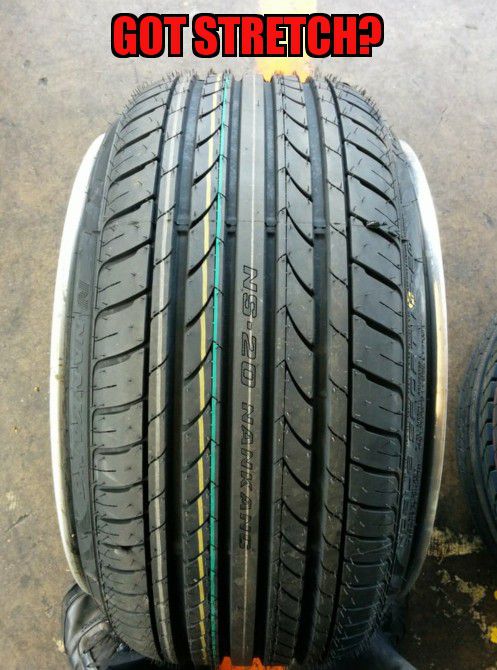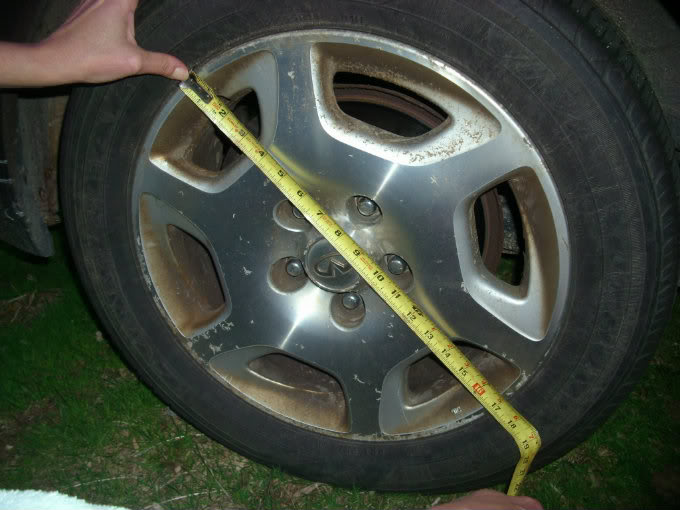Can You Put 16 Tires on 17 Rims
No, you cannot put 16 tires on 17 rims. Putting any tire on a rim that doesn’t match in size can lead to instability and dangerous driving conditions.
It is crucial to ensure that the tire and rim sizes are compatible to maintain proper traction, handling, and safety on the road. Mixing tire and rim sizes can affect the tire’s ability to fit properly, compromising its performance and potentially causing accidents.
It is always recommended to follow the manufacturer’s specifications and consult with a professional to ensure the correct tire and rim pairing for your vehicle.
The Basics Of Tire And Rim Compatibility
Tire And Rim Sizes |
|
Understanding tire aspect ratio is crucial when it comes to tire and rim compatibility. The aspect ratio is the numerical value that indicates the tire’s height as a percentage of its width. A lower aspect ratio means the tire will have shorter sidewalls, providing better handling but a harsher ride. On the other hand, a higher aspect ratio will result in taller sidewalls, offering a more comfortable ride but reduced responsiveness. Rim diameter and tire size compatibility is also essential to consider. When choosing tires, you must ensure their diameters match the rim size. For instance, you cannot put 16-inch tires on 17-inch rims. The correct combination of tire width, aspect ratio, and rim diameter ensures optimal performance, handling, and safety. |
Factors To Consider When Putting 16 Tires On 17 Rims
Putting 16 tires on 17 rims may seem like a possibility, but there are several factors to consider before proceeding. The first consideration is tire and rim compatibility. It’s crucial to ensure that the tire size and load rating are suitable for the rim size. Installing tires that are too small or too large for the rims can lead to safety issues and affect the performance of the vehicle.
Another important factor to consider is the tire sidewall height and clearance. Tires with a smaller sidewall height may cause the tire to rub against the rim, resulting in damage to both the tire and the rim. Moreover, altering the sidewall height can affect the overall diameter of the tire, which may lead to inaccurate speedometer readings and affect the vehicle’s handling.
Lastly, putting 16 tires on 17 rims can have an impact on ride quality and handling. The mismatch in tire and rim sizes can affect the vehicle’s stability and steering response. It may also result in uneven tire wear and reduce the overall comfort of the ride.
Potential Issues And Risks With Incompatible Tires And Rims
Putting 16 tires on 17 rims can lead to several potential issues and risks. One major concern is the uneven tread wear that may occur when using incompatible tires and rims. Uneven tread wear can lead to decreased tire performance and longevity, affecting the overall traction and control of the vehicle. This can compromise safety, especially in hazardous road conditions.
Additionally, the use of incompatible tires and rims may increase the risk of tire blowouts. When the tire and rim sizes do not match, the tire’s sidewall may be stretched or distorted, making it more prone to failure. Tire blowouts can cause sudden loss of control and lead to accidents.
Another important consideration is the impact on the vehicle’s warranty. Manufacturers generally specify the appropriate tire and rim combinations for their vehicles. The use of incompatible tires and rims may void the warranty, leaving you responsible for any repairs or replacements that may be needed.
Therefore, it is crucial to ensure that you use the correct tire and rim sizes for your vehicle as specified by the manufacturer. This will ensure optimal performance, safety, and preserve any existing warranties. Avoid installing 16 tires on 17 rims to prevent potential issues and risks associated with incompatible tire and rim combinations.

Credit: www.reddit.com
Exploring Possible Solutions For Putting 16 Tires On 17 Rims
Putting 16 tires on 17 rims may seem like a challenging task, but there are some possible solutions to explore. One option is to use adapters or spacers, which can help bridge the gap between the tire and the rim. These adapters or spacers are designed to align the wheel and tire properly, ensuring a secure fit. It is important, however, to seek professional advice before using adapters or spacers, as they may affect the overall performance and safety of your vehicle. Upgrading to compatible rims or tires is another solution worth considering. Investing in rims or tires that are specifically designed to fit each other will ensure a proper fit and reduce the risk of any potential issues. Whether you choose to use adapters or spacers or upgrade to compatible rims or tires, it is essential to prioritize safety and consult with experts before making any modifications.
Understanding The Legal And Safety Implications
Putting 16 tires on 17 rims can have legal and safety implications that should not be overlooked. From a legal perspective, it is important to understand that there are regulations in place regarding tire and rim sizing for vehicles. Modifying the tire and rim combination can affect the overall handling and performance of the vehicle, potentially leading to accidents or legal troubles. Regarding safety implications, mismatched tire and rim sizes can cause issues such as reduced traction, increased risk of tire blowouts, and compromised stability. It is crucial to have the correct tire and rim combination for optimal safety on the road. In terms of insurance coverage implications, any modifications to the vehicle’s tire and rim combination may void certain insurance policies, leaving the driver unprotected in case of accidents or damage. It is recommended to consult with experts and adhere to regulations to ensure legal compliance and maintain safety on the road.
Answering Common Questions About Tire And Rim Compatibility
It’s important to have the right combination of tires and rims for optimal performance and safety. While it is technically possible to put smaller tires on larger rims or vice versa, it is not recommended due to several risks involved.
Putting smaller tires on larger rims can affect the handling and performance of your vehicle. The tires may not fit properly on the rims, causing uneven wear and tear. It can also impact the accuracy of your speedometer and odometer readings.
On the other hand, putting larger tires on smaller rims can be equally problematic. The tires may not have enough contact with the road surface, leading to reduced traction and stability. This can significantly affect your vehicle’s handling and increase the risk of accidents.
Mismatched tires and rims can also cause damage to your suspension system, wheel bearings, and other components. It’s important to consult with a professional to ensure compatibility and avoid potential risks.
As for mixing different tire sizes on the same vehicle, it is generally not recommended. Different sizes can have different rolling characteristics, which can affect the handling and stability of the vehicle. It’s always best to follow the manufacturer’s recommendations for tire and rim size for your specific vehicle.
Frequently Asked Questions Of Can You Put 16 Tires On 17 Rims
Can I Put 16 Tires On 17 Rims?
No, you cannot put 16 tires on 17 rims. The tire and rim sizes must match for safe and proper fitting. Using the correct size ensures optimal performance and reduces the risk of accidents and tire damage. Always consult the vehicle manufacturer’s guidelines for recommended tire and rim size combinations.
What Happens If I Put 16 Tires On 17 Rims?
Putting 16 tires on 17 rims can cause several issues. The tires will not fit snugly, leading to a potential safety hazard, decreased handling, and increased wear and tear. This mismatch can also affect the accuracy of your vehicle’s speedometer and electronic stability control system.
It’s crucial to use the correct tire and rim size for optimal performance and safety.
Can I Switch My 16-inch Tires To 17-inch Rims?
No, you cannot switch 16-inch tires to 17-inch rims without replacing the tires as well. The tire size should match the rim size for safe and proper fitting. If you wish to use 17-inch rims, you will need to purchase 17-inch tires that are compatible with your vehicle.
Always consult your vehicle manufacturer’s recommendations for the right tire and rim combinations.
Conclusion
To summarize, while it may be physically possible to put 16 tires on 17 rims, it is not recommended or safe to do so. The different sizes can lead to a variety of issues, such as tire damage, poor handling, and potential accidents.
It is crucial to follow the manufacturer’s guidelines for optimal performance and safety on the road. Always consult with a professional to ensure that your tires and rims are compatible and meet all safety standards.
